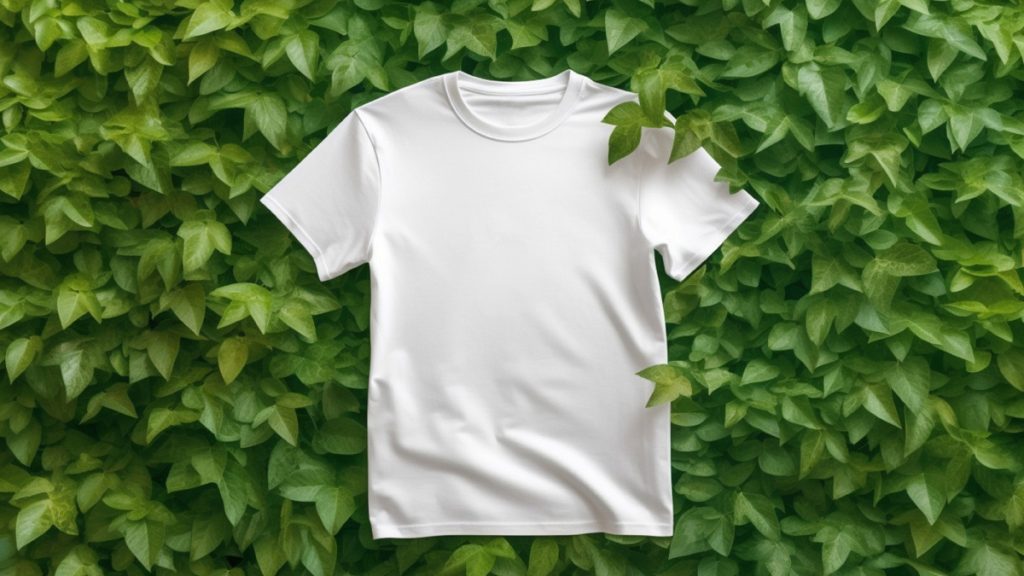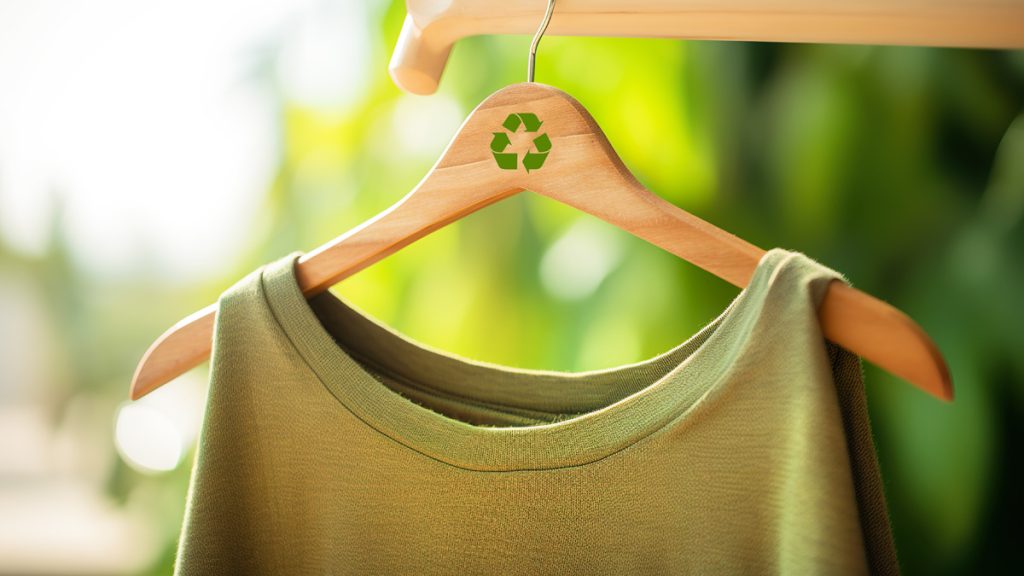Ultimate Guide To Choosing The Best Eco-Friendly Clothing

The fashion industry is a bursting money-maker, earning $1.7 trillion dollars this year alone, and that number is anticipated to rise in the future. This staggering figure makes sense if you think about it. Everybody needs clothes, and choosier demographics are willing to spend big bucks on great-looking fashions. But what does all this spending on clothing mean for our planet? That’s such a profound question that we thought it’d be a good idea to talk about eco-friendly clothing and get to the core thread on how the clothing industry is wreaking havoc on our environment.

Our goal is to help you stick to your commitment to going green by providing this ultimate ethical fashion guide, which spells out exactly what you should know about eco-friendly clothing. If that sounds like something you can get on board with, please read further about how to shop sustainably for clothes, which eco-friendly clothing brands to choose from, and many more green-centric choices you can make that help the planet while still looking fabulous.
Table of Contents
- What Makes Clothing Eco-Friendly?
- Why Choose Eco-Friendly Clothing?
- What Are Eco-Friendly Clothing Materials To Prioritize?
- What is Greenwashing in Fashion?
- Practical Tips for How to Shop Sustainably For Clothes
- Learn More About Eco-Friendly and Sustainable Products
- Key Takeaways On Eco-Friendly Clothing and Fashion
- Must-Have Eco-Friendly Products
- Conclusion
What Makes Clothing Eco-Friendly?
The cold, hard truth is that mainstream manufactured clothing contributes to roughly 10% of the global carbon dioxide output in our environment today. Then factor in the 500,000 tons of microfibers that are cast into the ocean from washing non-eco-friendly clothing – and you can start to conceptualize the potential devastation unregulated fashion is causing our planet.
Luckily, there are sustainable clothing options that use eco-friendly clothing materials that can significantly reduce threats to our environment. We’re talking about choosing planet-friendly options in the realm of natural fibers, such as organic cotton, hemp, linen, and bamboo – all of which can significantly reduce the environmental impact of clothing.
These are superior materials because they aren’t grown with harmful pesticides or synthetic fertilizers, making them more sustainable choices compared to conventional cotton or synthetic fabrics like polyester. Additionally, they often require less water and energy during the manufacturing process.
Another element that makes clothing eco-friendly is ethical manufacturing practices, such as clothing companies adhering to safe working conditions for employees and providing them fair wages.
You might not have thought of it, but eco-conscious clothing also factors in the entire lifecycle of a garment – from production to disposal. When you do the math, you’ll discover that 85% of clothing gets thrown away, and those discarded garments wind up adding to the already alarming growth of landfills. Alternatively, sustainable fashion brands promote recycling initiatives and offer take-back programs where old garments can be returned for proper recycling or upcycling instead of ending up in landfills.
Why Choose Eco-Friendly Clothing?
First and foremost, opting for eco-friendly clothing helps reduce your carbon footprint and minimize harm to the environment. Conventional textile production processes involve the use of harmful chemicals, excessive water consumption, and high levels of waste generation.
In addition to being more promising for the planet, eco-friendly clothing is also healthier for you. Traditional textiles often contain toxic chemicals that can be absorbed through your skin. Choosing organic fabrics means avoiding these harmful substances and reducing your risk of exposure to potentially dangerous toxins.
Choosing eco-friendly clothing is a small but meaningful way to make a positive impact on both the environment and society as a whole. So why not embrace sustainability in your wardrobe choices?
What Are Eco-Friendly Clothing Materials To Prioritize?
So, what are the top eco-friendly clothing materials that should be prioritized? Here are a few:
Bamboo Fabric: As you might imagine, this type of fabric is made from bamboo (and usually an organic cotton blend). Bamboo fabric uses less machinery to grow and requires less water to produce – hence minimizing the negative impact on the environment.
Organic Cotton: This is one of the most popular choices for eco-conscious consumers because unhealthy pesticides or synthetic fertilizers are not used to produce organic cotton, making it better for the planet and farmers.
Hemp: Known for its durability and versatility, hemp is a fantastic choice for sustainable clothing. It requires minimal water and no pesticides to grow, making it an environmentally friendly option.
Tencel (Lyocell): Made from wood pulp sourced from sustainably managed forests, Tencel fabric has gained popularity in recent years due to its softness and breathability.

What is Greenwashing in Fashion?
Greenwashing is a big buzzword in the fashion industry, but what does it really mean? In a nutshell, greenwashing refers to when companies falsely claim their products are eco-friendly or sustainable. It’s a nefarious practice that aims to deceive consumers and create an illusion of sustainability.
The rise of greenwashing can be attributed to the growing demand for ethical and eco-friendly clothing. Many brands have recognized this trend, and clothiers attempt to capitalize on it without substantially changing their production processes or materials.
How To Tell When A Fashion Brand Is Greenwashing?
First, look beyond the fancy marketing slogans and designer labels and dig deeper into their practices. Check for transparent information about their commitment to sustainability and manufacturing processes. Ask questions like: Are they sourcing fabrics from sustainable materials? Do they use ethical labor practices? Are they taking steps towards reducing waste and carbon emissions? Do they offer recycling programs or take-back initiatives for old garments?
Another red flag is when a brand makes vague or unsubstantiated claims about being “green” or “eco-friendly.” Look for third-party certifications or recognitions that validate their sustainability efforts.
Also, take a hairy eyeball to the packaging used by the brand. Truly eco-conscious companies will opt for minimal packaging made from recycled materials rather than excessive plastic wrapping.
Practical Tips for How to Shop Sustainably For Clothes
By now, we hope this guide to eco-friendly clothing has opened your eyes about what it is, why it’s the preferred option, and unethical tactics used by clothing companies you should be wary of. Now, here are some tips on how to shop sustainably for clothes:
1. Research and Choose Ethical Brands: Before making a purchase, take the time to research brands that prioritize sustainability.
2. Quality Over Quantity: Instead of buying cheap, fast fashion items that won’t last long, invest in high-quality pieces that are made to withstand wear and tear.
3. Opt for Natural Fabrics: Synthetic materials like polyester contribute to pollution and take hundreds of years to decompose. Choose clothing made from natural fibers like organic cotton, hemp, linen, or bamboo for a more sustainable option.
4. Buy Second-hand or Vintage: Give pre-loved clothes a second life by shopping at thrift stores or online platforms dedicated to selling pre-owned garments.
5. Consider Renting or Borrowing: If you have an event coming up where you need a special outfit, consider renting it instead of buying something new that will only be worn once.
6. Take Care of Your Clothes: Extend the lifespan of your garments by following proper care instructions – washing on cold cycles, air-drying whenever possible, and mending any small tears or loose buttons promptly.
Learn More About Eco-Friendly and Sustainable Products
In addition to clothing, there are other products aside from clothing that we should all take a closer look at in terms of preserving our beautiful blue planet. From toilet paper to toothbrushes, clothing to laundry detergent, there are mindful manufacturers that are satisfying the desperate and very real need for sustainability.
In doing our groundwork on sustainable fashion, we fell in love with one particular eco-friendly company called Seek Bamboo. This company offers a myriad of products that are ethically sourced, sustainable, and manufactured in accordance with a rigid and eco-friendly commitment.
That said, If you’re looking for eco-friendly products, we urge you to check out Seek Bamboo, where you can be confident that you are purchasing for the purpose of preserving our planet.
Key Takeaways On Eco-Friendly Clothing and Fashion
Make mindful material choices: When it comes to eco-friendly clothing, prioritize materials like organic cotton, hemp, linen, and recycled fibers. These materials have a lower environmental impact compared to conventional fabrics.
- Make mindful material choices like organic cotton, hemp, or bamboo. These materials have less environmental impact compared to conventional fabrics.
- Look out for certifications, such as Global Organic Textile Standard (GOTS) or Oeko-Tex Standard 100, ensuring garments’ sustainability and ethical production.
- Avoid getting caught in the greenwashing ruse and look for transparency in supply chains and manufacturing processes.
- Shop for quality of quantity by investing in well-made, durable pieces. These will last longer rather than buying cheap fast fashion items that contribute to waste.
- Consider vintage shopping at consignment shops, purchasing second-hand, or renting to reduce waste.
- Keep your clothes out of landfills by taking good care of them. Also, consider donating clothes that are still in good shape instead of throwing them away.
- Educate yourself about sustainable fashion and stay current on more sustainable and ethical clothing manufacturing processes.
Must-Have Eco-Friendly Products
- Eco-Friendly Laundry Detergents like sheets or tablets
- Bamboo Toothbrushes
- Natural Sponges like Konjac or Coconut Fiber
- Reusable Food Storage Containers
- Bamboo Toilet Paper
- Reusable Water Bottles
- Toothtabs over toothpaste tubes
- Biodegradable Cleaning Products
- Shampoo and conditioner bars over shampoo bottles

Conclusion
In the final analysis, choosing eco-friendly clothing is a responsible choice for the environment and also a savvy way to support ethical and sustainable fashion practices. Electing to obtain clothes made from organic, recycled, or low-impact materials can significantly minimize your carbon footprint and contribute to a greener future. So, the next time you shop for clothes, employ mindful shopping habits so you can curate an environmentally friendly closet filled with strong values and fabulous fabrics.







